-
11 nights / 12 days
-
Private
-
Every Day
Description
Egypt where the civilizations were begun
| Program | Egypt Tour Packages 12 days tour King Amenmhat |
| Duration: | 11 nights / 12 days |
| Destinations covered: | Cairo » Aswan » Nile Cruise » Luxor » Hurghada » Cairo |
(03 Nights Cairo » 03 Nights Nile Cruise » 01 Night sleeper train » 01 Night Aswan » 03 Nights Hurghada)
Enjoy the Magic and Beauty of Egypt
Explore the top sights of Egypt and do it all in one trip. Start in Cairo and visit the Pyramids, the Egyptian Museum, Khan El Khalili, and more. Travel with 1st class tourist sleeper train to Aswan to see more. Stay on board a Nile Cruise and explore the majestic attractions of Egypt between Aswan and Luxor. End your tour with a relaxing time on Hurghada beaches in the Red Sea.
Experience Egypt and feel like royalty only with Khaled Abbass Tour Guide
Itinerary
Welcome to Cairo. Your tour begins when you are greeted by our representative who will assist you through immigration and customs formalities. After you have collected your luggage, he will then take you, in our deluxe vehicle, to your Cairo hotel where you will meet your guide who will revise the tour plan with you.
Start your day tour to Giza Necropolis where our driver will pick up you from your hotel in Cairo or Giza and join our professional tour guide to witness the real magnificence ancient Egyptian attractions through visiting:
The Step Pyramid of Saqqara
It’s called also step Pyramid of Zoser or Josser, due to the King Zoser who ordered his minister Imhotep to build it, this pyramid consists of six-layers, It’s height was about 197foot (60 meters). It is the first Pyramid ever built and it is the first largest scale stone building in the world.
Pyramid of Unas
The Pyramid of Unas is a smooth-sided pyramid built in the 24th century BC for the Egyptian pharaoh Unas, the ninth and final king of the Fifth Dynasty.
Pyramid Complex of Teti
Teti (c.2345–2323 BC), the first ruler of the Sixth Dynasty, built his pyramidal complex not far from the Step Pyramid of (c.2667–2648 BC), in Saqqara. Upon completion, it stood 52.5 m tall.
The mastaba tomb of Kagemni also known as Memi
The mastaba was discovered in 1843 by Richard Lepsius. It had to wait until 1905 before von Bissing would begin his publication of rooms IV to VIII, which wasn't completed until 1911.
The mastaba of Nikauisesi
The mastaba of Nikauisesi is situated in the north-east sector of the necropolis of Saqqara. The tomb was discovered in 1979-80 by the Supreme Council of Antiquities
The mastaba of Ankhmahor
The mastaba of Ankhmahor is situated on the northern side of Teti’s pyramid at Saqqara in the block of tombs belonging to the officials of the king’s Dynasty VI reign.
Memphis Open Air Museum
Memphis was the oldest capital of ancient Egypt, the first one that was founded after the unification of upper and Lower Egypt. The city was founded in the first dynasty (3100 BC).
Giza Pyramids Complex
The three main pyramids of Giza (Khufu, Khafre, and Menkaure) are sufficient enough to build a 2-meter-long wall and span 100,000 square kilometers around the globe along with the equator.
The Great Pyramid
The Great Pyramid of King Khufu is considered largely represents the spirit of ancient Egypt, King Khufu who built this Pyramid as a cemetery has left little information about his reign.
The Magical Sphinx
Who among us when mentioning the name of the Sphinx does not think about this stone sculpture that carved in the form of the human head and lion body, which is located in the Giza plateau in Egypt the Sphinx is one of the oldest and the largest sculptures in the world, it’s about 73.5 meters long and 6 meters wide.
Enjoy your lunch and it will be served at a local restaurant after the day tour. Then return to your hotel and overnight in Cairo.
Meals: Breakfast, Lunch
Check out after breakfast at your hotel in Cairo and then you will be escorted by your private guide to visit:
The Egyptian Museum
Where you can see a rare collection of artifacts that date back to 5000 years and Over 250,000 genuine monuments are presented, the Egyptian Museum also contains the most important artifacts that reflect the splendor of ancient Egyptian civilization.
Salah El Din Citadel In Cairo
Salah Al-Deen (known as Saladin to European historians) overthrew the Fatimid dynasty in 1171 AD, establishing the new Sunni Ayyubid Caliphate. Given the threat of invasion by European crusader armies, Saladin decided to improve the fortifications of the city and in 1176 AD he began the construction of a wall that would encircle both Al-Qahira (today Islamic) and Fustat (Old Cairo). Saladin’s Citadel served as the seat of government in Egypt for 700 years until Khedive Ismail moved into Abdin Palace in newly constructed Downtown Cairo in the 1870s.
Mohamed Ali Mosque
The Mosque of Muhammad Ali is located inside the Citadel of Salah al‑Din al‑Ayyubi (Saladin) in Cairo. It was built by Muhammad Ali Pasha (1220–1264 AH/1805–1848 AD), the founder of the Muhammad Ali Dynasty (1220–1372 AH/1805–1953 AD), on the site of Mamluk palaces. He had these demolished to make room for his new building, which is also known as the "Alabaster Mosque", in reference to its marble paneling on its interior and exterior walls. The mosque’s twin minarets are the highest in all of Egypt, each reaching a height of 84 meters.
Coptic Cairo
Coptic Cairo is a unique area with Old Cairo that has a concentration of Christian churches and other sites that date from the centuries between the decline of the pharaonic religion and the arrival of Islam when Egypt had a Christian majority. Coptic Cairo is largely built around the fort of Babylon on the remains of its walls.
Saint Mercurius Church
Saint Mercurius Church in Coptic Cairo is a Coptic Orthodox church situated just to the north of the Babylon Fortress in Old Cairo among a group of important churches and within the area known as the Abu, Sayfayn Cloister to be found three churches and a convent. One of these churches is dedicated to Saint Mercurius, and is the largest in the district of ancient Babylon. The church is named after St. Philopater Mercurius who is known as Abu Sayfayn ("double sworded").
Hanging Church
The Hanging Church is named for its location above a gatehouse of Babylon Fortress, the Roman fortress in Coptic Cairo (Old Cairo); its nave is suspended over a passage. The church is approached by twenty-nine steps; early travelers to Cairo dubbed it "the Staircase Church".The land surface has risen by some six meters since the Roman period, so the Roman tower is mostly buried below ground, reducing the visual impact of the church's elevated position.
Church Of The Holy Virgin (Babylon El-Darag)
The Church of the Holy Virgin in Babylon El-Darag was occupied from the 11th to the 15th centuries by several Coptic patriarchs, seven of whom were buried in the church. Pope Zacharias was one of them. Pope Cyril VI of Alexandria used to pray in the church before assuming the papacy. According to tradition, the church was one of the resting places of the Holy Family during their sojourn in Egypt, as well as the location from which Peter sent his epistle (1 Peter 5:13). The relics of saints Demiana and Simon the Tanner are contained in the church as well.
Saints Sergius And Bacchus Church
Saints Sergius and Bacchus Church is traditionally believed to have been built on the spot where the Holy Family, Joseph, Mary, and the infant Jesus Christ, rested at the end of their journey into Egypt. They may have lived here while Joseph worked at the fortress. The church is of significant historical importance, and in fact, it is where many patriarchs of the Coptic Church were elected. The first to be elected here was Patriarch Isaac (681-692). It is the episcopal church of Cairo, and it was the episcopal See of Masr (the district of Old Cairo) that replaced the former See of Babylon. Many bishops of the See were consecrated in the Church until the reign of Patriarch Christodulus (1047–1077).
Church Of St. George (Cairo)
The Church of St. George is a Greek Orthodox Church within the Babylon Fortress in Coptic Cairo. It is part of the Holy Patriarchal Monastery of St George under the Greek Orthodox Patriarchate of Alexandria and all of Africa. The church dates back to the 10th century (or earlier). The current structure was rebuilt following a 1904 fire, construction was finished in 1909. Since 2009, the monastery's hegumen has had the rank of bishop with the title Bishop Babylon ("Bishop of Babylon").
Khan El-Khalili.
Located in the heart of Islamic Cairo, near the medieval walled city of the Saladin Citadel, the Khan el-Khalili market was built on the old burial site of the Fatimid Caliphs, who founded Cairo in the 10th century. Trading in the souk dates from the 14th century, but its elaborately-carved monumental gates and grid-like alleyways were constructed in the 16th century under Egypt's last powerful Mamluk ruler. Later, you will be transferred to Giza railway station to board the sleeper train to Aswan. Dinner and breakfast will be served on board.
Meals: Breakfast, Lunch
Important Note
Sleeper trains are designed and equipped according to a satisfactory standard and quality that was set up by the Egyptian Railway Authority. The sleeper train takes about 14 hours from Cairo to Aswan. However, we recommend using domestic flights with a supplement of US$ 85 per person instead of spending time in sleeper trains.
After breakfast on board the train, You will be met at Aswan station, then transferred to your hotel, Start your tour to visit
Philae Temples
This beautiful temple complex is one of the most picturesque in all of Egypt. It sits on Aglika Island just south of the old Aswan Dam and you must ride a water taxi to the island to get to the ruins. The temple was moved to its current location following the construction of the High Dam, which threatened to submerge it permanently. The careful reconstruction at the current site was carefully completed, painstakingly preserving the original appearance and layout of the complex and even landscaping the island to match its former location.
The High Dam
When construction began on the High Dam in 1960, it was the most heralded part of President Gamal Abdel Nasser’s effort to develop Egypt for all Egyptians. While the dam is certainly not the largest in the world, it is an impressive engineering feat nonetheless, over 360 feet tall and 12,500 feet across. The dam was completed in 1971 and the huge reservoir behind it, named for President Nasser, finished filling in 1979.
The Unfinished Obelisk
The Unfinished Obelisk is a rare opportunity to consider what this process might have been like and just how difficult it was to shape and carve the great stone blocks that makeup Egypt’s many monuments. This huge obelisk would have stood 140 feet in height, the largest even in Egypt. It was to be carved from the Red Aswan granite that decorates many of Egypt’s greatest monuments and for which the city is famous. This greatest of all of Egypt’s monoliths, however, was never finished. At a late stage in its formation, a flaw in the rock was discovered and it was abandoned. dinner and overnight in Aswan.
Meals: Breakfast, Lunch,
Breakfast at your hotel in Aswan. Then, transfer to embark on your Nile River Cruise before Lunch then you will join your tour guide to the enchanting “Abu Simbel Temple” which is known to be a true piece of art. The two temples were carved out of the mountainside in 1200 BC during the reign of Pharaoh Ramesses II the second and his wife Queen Nefertari. All the carvings, artwork, wall paintings, and statues are extremely beautiful and tell incredible stories about Ramses' victories at the battle of Kadesh and honor many gods like Ra, Amon, and Ptah. Your visit includes:
Abu Simbel Temples
This site south of Aswan along Lake Nasser’s shore is the most famous in all of Egypt after the Giza Pyramids. Built by the greatest of the pharaohs, Ramesses II, these huge rock-cut temples marked the southern boundary of the Egyptian Empire with Nubia at the peak of its power during the New Kingdom. They were meant to convey the power of Egypt’s rulers to anyone who laid eyes upon them.
The Great Temple
The Great Temple of Abu Simbel, in Nubia near Egypt’s southern border, is among the most awe-inspiring monuments of Egypt. It was cut into the living rock by King Ramesses II (the Great) of the Nineteenth Dynasty, around 1264 BC. The temple is most well known for the four imposing seated colossal statues that dominate its façade. One of these collapsed because of an ancient earthquake, and its fragments can still be seen on the ground.
The Small Temple
Another rock-cut temple to the north, known as the Small Temple, is dedicated to the goddess Hathor and Ramesses II’s Great Royal Wife, Queen Nefertari. On the façade of the Small Temple, her colossi are the same size as those of her husband, a very rare example of such display. At the end of the day. We will return back to Aswan to rejoin your cruise and start sailing to Kom Ombo while lunch is being served on board.
Meals: Breakfast, Lunch, And Dinner
You can enjoy your breakfast, and then a visit to the Temple of Kom Ombo dedicated to the gods Horus and Sobek.
Sobek And Horus Wr Temples
The temple is unique for its dedication to two different deities: the local crocodile-headed god Sobek, and the first "god of the Kingdom", the falcon-headed god Horus the Elder (also called Haroeris). This double dedication was deliberate. Not only is it architecturally duplicated, with two sets of courts, hypostyle halls, and sanctuaries, but the twin temple is also symbolic of the local and Universalist themes that the two different deities represented. After your visit to this temple, your guide will return you to your cruise boat for Lunch, while the boat sails majestically onwards towards Edfu Once ashore you will visit
The Temple Of Horus
Built during the Ptolemaic Kingdom between 237 and 57 BC, the Temple of Horus at Edfu is generally regarded to be the best-preserved of the Ancient Egyptian sanctuaries. For 200 years, the structure was buried under almost 40 feet (12 meters) of desert sand and silt from the Nile, which incredibly helped to conserve it to near-perfection. After your visit to this temple, your guide will return you to your cruise boat for dinner, while the boat sails majestically onwards towards Luxor. overnight on board your Nile Cruise.
Meals: Breakfast, Lunch, And Dinner
Karnak Temple
Built over two millennia between the years of around 2200 and 360 BCE, Karnak is a massive Ancient Egyptian temple complex that was one of the country's most important places of worship under the rules of Hatshepsut, Seti I, Ramesses II and Ramesses III. As well as the dominating Temple of Amun-Ra, Karnak is also made up of smaller chapels and sanctuaries dedicated to other deities, as well as grand halls, docks, a sacred lake. and pylons - the monumental gateways that mark temple entrances.
Luxor Temple
Luxor Temple, Ipet‑resyt “Southern Sanctuary” to the ancient Egyptians, was so called because of its location within ancient Thebes (modern Luxor). It is located around three kilometers to the south of Karnak Temple, to which it was once linked with a processional way bordered with sphinxes. The oldest evidence for this temple dates to the Eighteenth Dynasty (c.1550–1295 BC).
The Valley Of The Kings
The rulers of the Eighteenth, Nineteenth, and Twentieth Dynasties of Egypt’s prosperous New Kingdom (c.1550–1069 BC) were buried in a desolate dry river valley across the river from the ancient city of Thebes (modern Luxor), hence its modern name of the Valley of the Kings. This moniker is not entirely accurate, however, since some members of the royal family aside from the king were buried here as well, as were a few non-royal, albeit very high-ranking, individuals.
Hatshepsut Temple
Hatshepsut (c.1473–1458 BC), the queen who became Pharaoh, built a magnificent temple at Deir al-Bahari, on the west back of Luxor. It lies directly across the Nile from Karnak Temple, the main sanctuary of the god Amun. Hatshepsut’s temple, Djeser-djeseru “the Holy of Holies” was designed by the chief steward of Amun, Senenmut.
Colossi Of Memnon
These two faceless colossi (the plural of colossus, which just means larger-than-life statue) are the first thing visitors see when they reach the west bank of the Nile opposite Luxor. This isn't surprising when you hear their dimensions: they tower 60 feet (18 m) above the plains and are estimated to weigh an enormous 720 tons each. Once your visit to these ancient Theban Temples is complete you will return to the boat for your dinner.
Meals: Breakfast, Lunch, Dinner
reakfast on board. Disembark from your Nile cruise after breakfast and transfer to Hurghada on the Red Sea. From Luxor to Hurghada are about a 3-hour and a half drive. Overnight in Hurghada.
Meals: Breakfast, Lunch.
Optional tours to experience the exquisite diving and snorkeling among the Red Sea coral reefs and see some amazing rare fish. Or choose one of the many other activities such as windsurfing, sailing and deep-sea fishing. Overnight in Hurghada.
Meals: Breakfast.
A new day starts with breakfast in the hotel then dive into the sands of time by a magical super Safari trip by Quad enjoy a camel ride and a delicious B.B.Q dinner. After enjoying an unforgettable Safari trip, you will return to your hotel for the overnight in Hurghada.
Meals: Breakfast
Breakfast at your hotel in Hurghada with free time at leisure and then you will be transferred to bus station to take the first class coach to Cairo (about 6 hours drive), upon arrival in Cairo you will be met and assisted, then transferred to your hotel for free time at leisure. Overnight in Cairo.
Meals: Breakfast.
Breakfast at the hotel. Transfer to Cairo International Airport for final departure.
Meals: Breakfast
Experience
-
Highlights
-
Day Activity01 Welcome to Egypt02 Pyramids of Giza and the Great Sphinx – Memphis – Sakkara03 Egyptian Museum – Coptic Cairo – Saladin Citadel – Khan Elkhalili04 The Unfinished Obelisk, High Dam, And Philae Temple05 Abu Simbel and Kom Ombo Back to Your Nile Cruise06 Kom Ombo Temple And The Temple Of Horus07 Luxor day tour East and West Banks08 from Luxor to Hurghada by car09 Optional Diving And Snorkeling Tours10 Optional Quad Bike Safari11 Transfer From Hurghada To Cairo12 Fly back home
-
Includes
-
What's Included03 nights’ accommodation in Cairo at hotel on bed and breakfast basis.01 nights’ accommodation on board of a sleeper train on half board basis (breakfast and dinner).01 nights’ accommodation in Aswan at hotel on bed and breakfast basis.03 nights’ accommodation on board a 5-star Nile Cruise on full board basis (all meals included) including all above shore excursions.03 nights’ accommodation in Hurghada at hotel on half board basis (breakfast and dinner).All transfers as per above-mentioned program.Private and personalized sightseeing shore excursions for 3 nights on the cruise.Private English speaking Egyptologist guides as per itinerary.Entrance fees for all sightseeing mentioned in the itinerary.Private and deluxe air-conditioned vehicle for all transportation.All applicable taxes.Arrival/departure assistance.Sleeper train ticket from Cairo to Aswan.Luggage handling at airports and hotels
-
What's Not Included:The package doesn't include international flight ticket.Tipping for guides, driver, Nile cruise crew, etc.…Personal expenses (laundry, telephone calls, etc...)



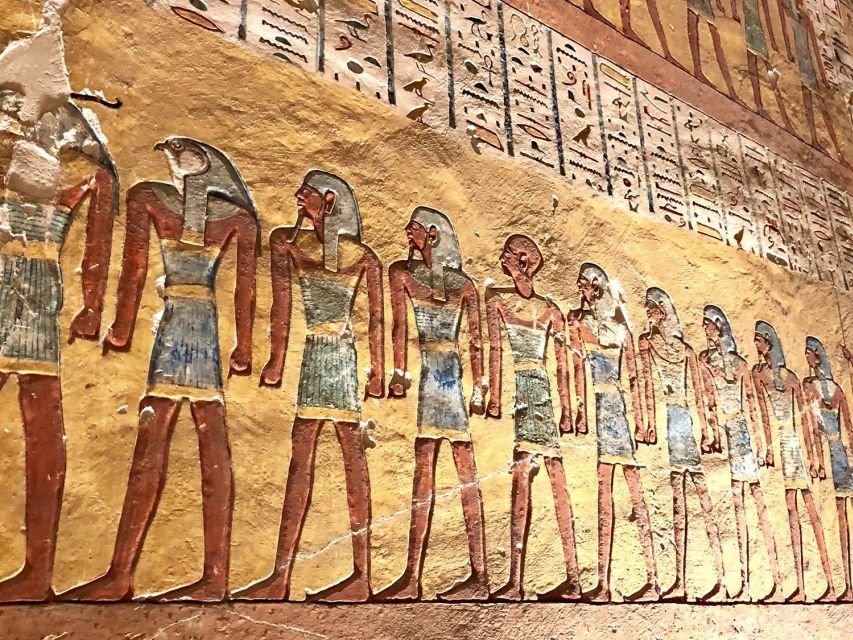

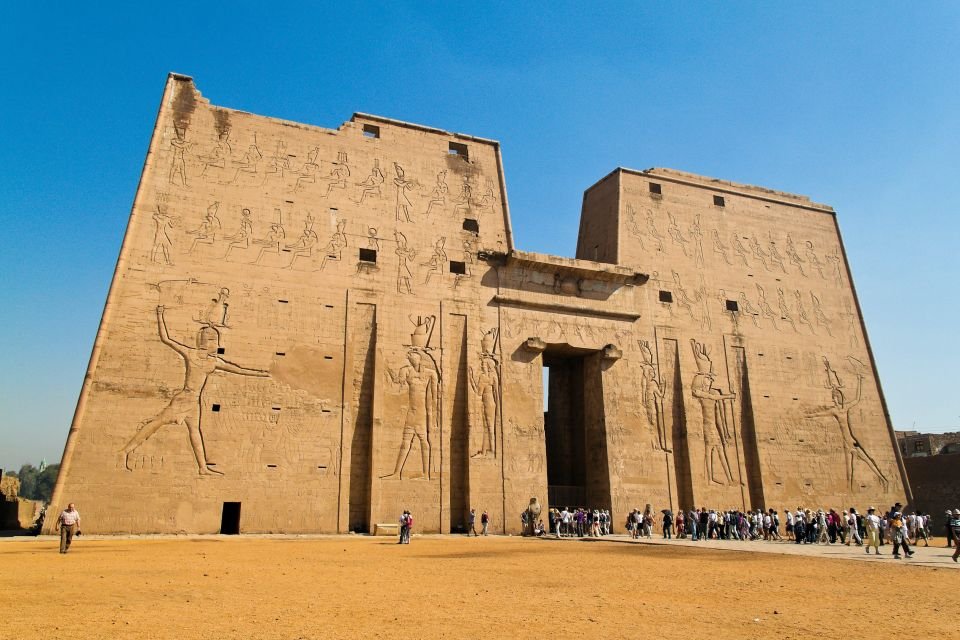
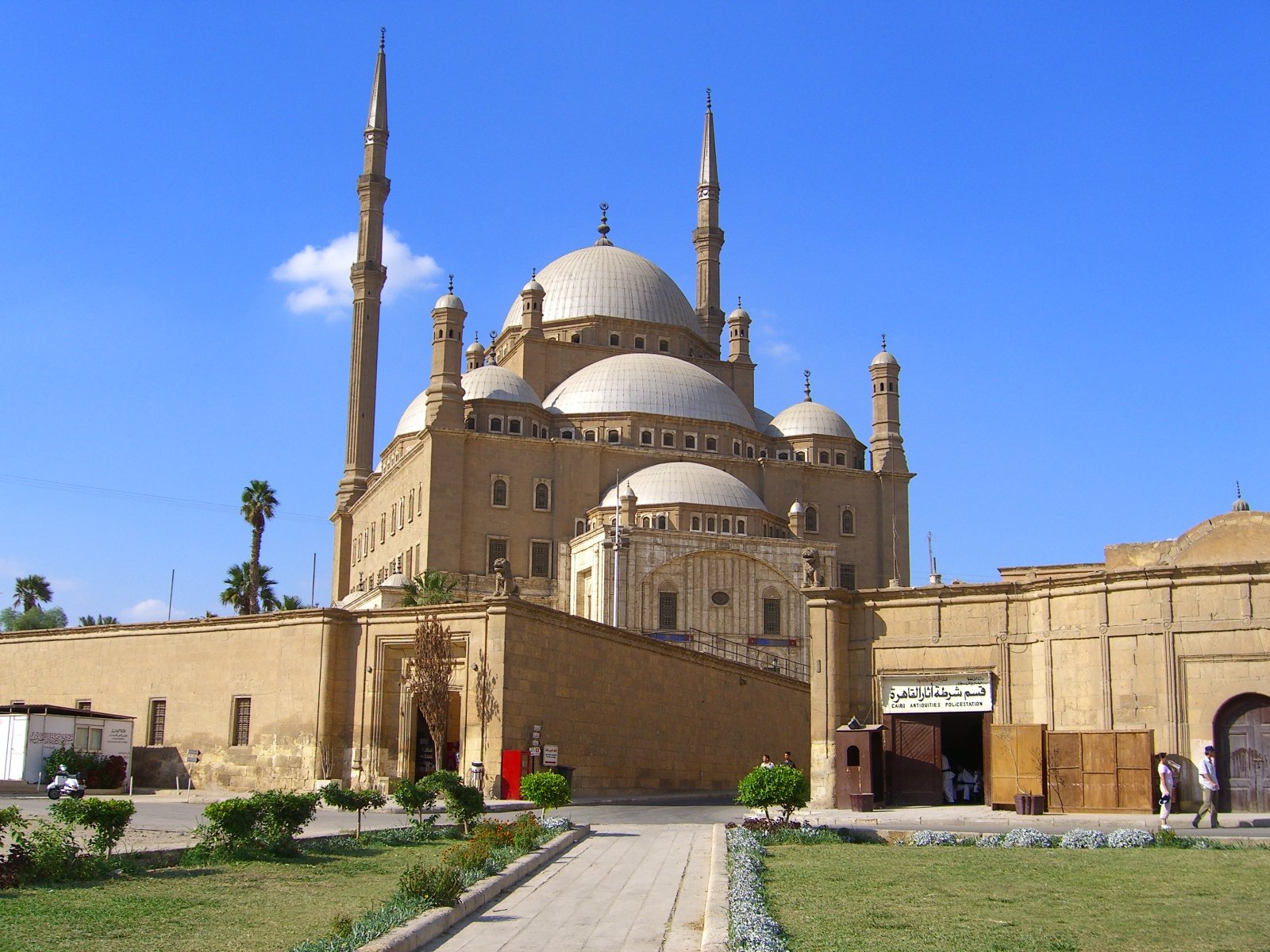

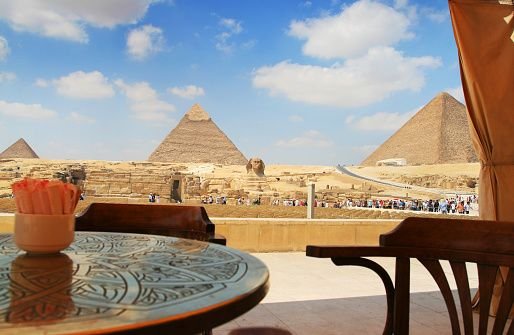
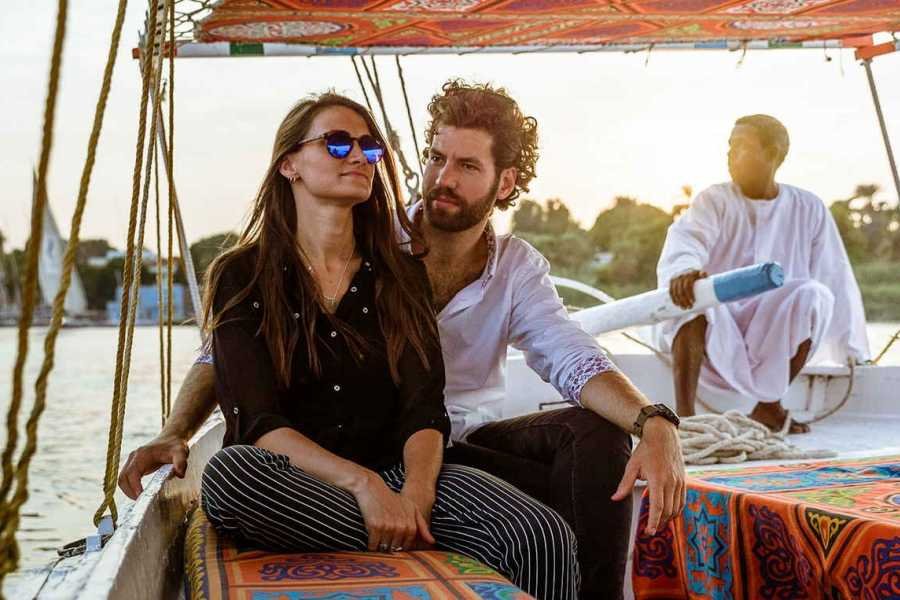

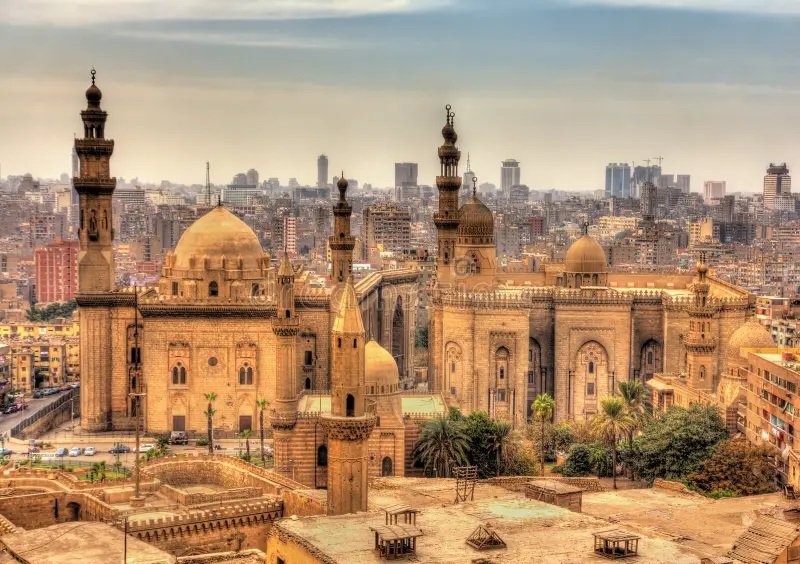
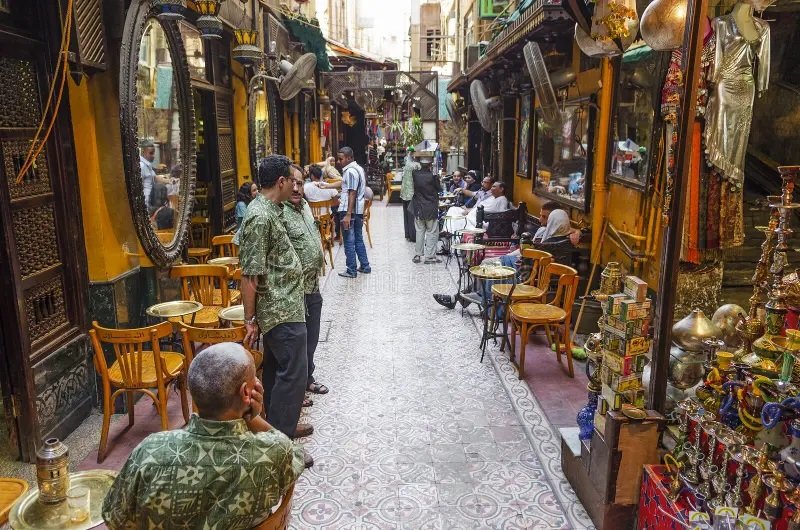



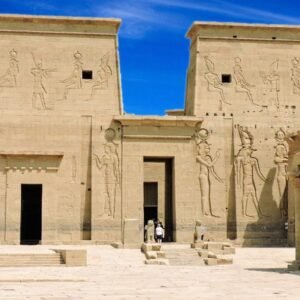

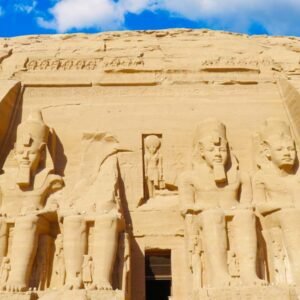


Be the first to review “Egypt Tour Packages 12 days Cairo, Nile Cruise and Hurghada by train”